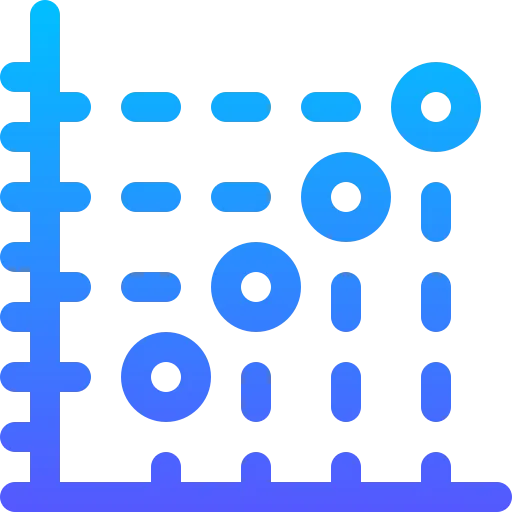You can encourage problem-solving and other skills in the classroom by playing the popular word game Wordle.
The free word game Wordle, which has proliferated on social media, can be used effectively in the classroom as well.
According to Esther Keller, M.L.S. Librarian at Marine Park JHS 278 in Brooklyn, solving the Wordleword of the Day requires strategy, using the process of elimination, and logical thinking in addition to vocabulary and spelling knowledge.
Following others’ examples on Twitter, Keller recently developed a Wordle addiction. She claims, “Everyone was just sharing Wordle, and it was these boxes, and I had no idea what it was.” As soon as she looked into it, she fell in love with the game and immediately began using it with her students.
What is Wordle?
Software engineer Josh Wardle from Brooklyn created the grid-based word game Wordle. With his word game-loving partner, Wardle created it as a game to play together. Wardle released it to the public in October, though, after observing its appeal among family and friends. There were more than 2 million daily users by mid-January.
Players have six chances to correctly guess a five-letter word in this browser-based game (opens in new tab), which can be played on smartphones but is not an app. Each time a guess is made, a letter changes to green, yellow, or grey. Yellow indicates that the letter appears in the word somewhere else but not in this spot, while grey indicates that the letter is completely absent from the word. Green indicates that the letter is used in the word of the day and is in the correct position. Everyone receives the same word, and at midnight, a new word is released.
When the puzzle is finished, it’s simple to share a grid of your progress so that other people can see how many guesses you needed to get it right without knowing the solution. The game’s popularity on Twitter and other social media platforms has been boosted by this feature.
Wordle in the Classroom
Sixth graders seem to enjoy Wordle and other similar games, according to Keller, who teaches an elective class in the library. Keller, however, has developed her own Wordle-style game for her students on Canva so that she is not constrained to one word per day. (For other educators who are interested in having their students find more than one word each day, here is Keller’s template(opens in new tab)).
There’s a good chance Wordle will dominate at least some of the discussion when historians look back on 2022. The word game with its instantly recognizable green and yellow squares is present everywhere, even in the classroom! Teachers all over the US are using Wordle in unique ways to teach phonics, vocabulary, and many other subjects. Are you curious about “how to use Wordle in the classroom?”
We requested that teachers share some of their clever Wordle lesson ideas!
Wordle: MORE FACTS
Perhaps you were able to avoid the most popular trend since the popping fidget toy? Wordle is a popular word game that gives players six chances to correctly guess a five-letter word. Thought you knew the word, but only got a few letters right?
- Players can reuse that letter exactly where it was placed if it is in the right place because the box containing it will turn green when it is.
- The box will turn yellow, notifying them that they can try again if the letter is in the last word but not in the proper place.
- Players will be warned not to use it again if the letter is simply incorrect because the box will turn grey.
Josh Wardle, a Welsh software engineer, invented the word game and popularized it in the latter half of 2021. Early in 2022, Wardle’s game had amassed such a following in such a short period of time that the New York Times purchased it and now hosts its own version.
Teachers and children alike have started playing the game independently. It was therefore only a matter of time before they appropriated it and made it their own!
Wordle in the Classroom: How Teachers Use It
Whiteboard Wordle
Emily Halbig was inspired to make a Wordle-style board on her classroom whiteboard by a student’s query. A student asked the Watsonville, California sixth-grade ELA and social studies teacher if she played the well-known game, and other students in the class began to ask questions as well.
Initially, Halbig was using Chrome to simulate real-world situations with her classes, but soon, students began showing up to her class with the solution already figured out on their own devices.
Regarding her source of inspiration, the students are the focus of this exercise. Halbig chose the daily word at random from a stack of five-letter words that each student had written on index cards. She switches things up so that students in period one hear words from period three and vice versa in order to keep the kids on their toes.
CVC Word Games
No one said you couldn’t reduce the box count to three to practice CVC words with your younger students, even though the original game was all about five-letter words! Create three boxes with six lines each for young students to write in. Mark the yellow and green with green and yellow markers.
Want to spice up word mapping?
The green and yellow magnetic tiles are ideal for some one-on-one CVC fun Wordle style if your classroom has the vibrantly colored magnetic tiles that kids use to build small structures during playtime. Additionally, the tiles will adhere to your whiteboard!
Make Use of Unit Vocabulary
When Beth Thomas, a school librarian in New Jersey, observed children using the library’s Chromebooks to play Wordle, she realized there was a chance to expand on the vocabulary taught during the unit. Thomas told Teach Starter that she decided to start using five-letter words associated with the subject at hand—river, canoe, etc.—with a group of seventh graders researching Lewis and Clark’s expedition in her middle school library.
According to her, “the kids got really excited about trying to solve the puzzle and had all different strategies (many using adieu as their first guess because of the all the vowels),” I insisted repeatedly that they must use what they were learning about the expedition to aid in their guesses.
Thomas already accepts student suggestions that are pertinent to the subjects being covered, and she plans to do so in the future.
On the day we returned from President’s Weekend, a student who frequents the building during lunchtime came up with the suggestion: a penny because Lincoln is on it. Thomas said this. I am already thinking about how to incorporate it into other research projects, such as those on ecosystems, ancient India, social justice issues, etc. I will undoubtedly ask more students to choose the daily Wordle to see if they can stump their friends.
On the school library’s Instagram, you can view Thomas’ collection of Lewis and Clark Wordle charts.
Dry-Erase Wordle Charts
Want to play a Wordle-style game but not take up any room on the whiteboard? Using regular anchor chart paper, fourth-grade teacher Drew Kelley made a dry-erase version for his classroom. The activity, which Kelley laminated, is ideal for students to complete in groups while he works with them during intervention time.
He explained, “They use dry-erase markers, so I can erase it every day after they are finished.”
Kelley makes the word selections and connects them to the subjects he is covering in class.
Dig Into the Archive
Are you new to Wordle and want to try the original? There is only one new World released each day, but the Wordle Archive offers free access to older games. On your classroom tablet, this makes a fantastic bell-ringer activity for kids!
Other Wordle-Like Games
Looking for more creative Wordle modifications you can use for yourself or in the classroom? Try out these free games!
- Nerdle or Ooodle for math
- Globle or Worldle (no, that’s not a typo for geography)
- Words: Dordle (which is similar to Wordle but requires two words!)
So it’s a game of words? Big deal…
Yes, it is merely a game of words. Nevertheless, it’s very well-liked: The New York Times reported that by January, it was being played daily by over 300,000. There are a few minor details that have led to everyone going absolutely crazy for it, despite the popularity’s puzzling appearance.
Due to the fact that there is only one puzzle per day, the stakes are raised. At Wordle, you only get one chance. You have to wait until tomorrow to receive a brand-new puzzle if you make a mistake.
Everyone is playing the exact same puzzle: This is essential because it makes it simpler to ping your friend and have a conversation about the puzzle of the day. “Today was difficult!” “How are you doing?” Did you receive it? This brings us to our next point.
Sharing your findings is simple: You are invited to share your Wordle journey for the day after completing the puzzle for the day, whether you were successful or unsuccessful. This is how it appears if you tweet the image.
Clones of Wordle
There have been imitations ever since Wordle became popular. plenty of copies Many of them are original, interesting alternatives, while some have been cynical cash grabs.
- Using their outlines as a guide, Worldle asks you to identify various nations.
- Wordle’s Battle Royale multiplayer edition is called Squabble.
- Dordle makes you solve two Wordles simultaneously.
That is only the very tip of the iceberg.
Tips and tricks
The following advice may be avoided if you’re a word game purist and prefer to rely solely on your own judgment. Here are some suggestions that you might find useful if you’re one of the people who is tired of seeing gray boxes.
How to start a sentence: In all likelihood, the most significant word is the first one. Pick a word with five different letters and three vowels to make the most of your opening gambit. Oration, media, and radio are a few examples. For some reason, I always say “adieu.” I won’t give up because it’s a habit.
I just finished reading a fascinating article by Tyler Glaiel, a programmer and game designer who sought the most effective first word. Evidently, everyone should start their Wordle sentences with the word “roate.” Please read the entire article; it’s excellent.
A keyboard that displays which letters are green, yellow, and gray is located at the bottom of the Wordle board. Reusing letters that came up gray should be avoided. Yes, it does seem obvious. Finding five-letter words that don’t use letters you’ve already tried, however, can take some time and effort. That work will be fruitful.
Letters may show up twice: This makes things more difficult, especially when you have to try word four or five but are out of letters. However, letters frequently recur, as evidenced by the fact that words like chill, sissy, and ferry were once the right answers.




































































